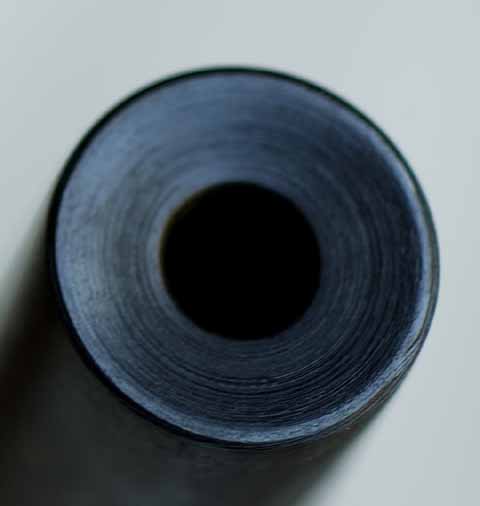
The Effects Of Crown Damage On Accuracy
We thought of running an experiment to see how a damaged crown would effect the accuracy of a rifle. A gentleman brought a Sako S 491 rifle here and wanted it to be re-barreled to 223 Ackley. Its original barrel is chambered for the 223 Remington.
We asked him if he wanted his old barrel, and he said no. And after explaining to him what we had in mind, he agreed to let us ruin his original barrel in the good cause of scientific research with this experiment on his rifle. Walter was jumping up and down with glee! He would get the chance of destroying something on purpose, and I won't scream at him for doing it!
His only stipulation was that the new barrel has to shoot better than his old one.
We tried a few loads in this rifle, and found that 26.0 grains of Alliant Reloader 15 with the Bill Brawand 52 grain match bullet would shoot best.
We decided to run the test as follows. We would shoot 5, 5-shot groups with this combination with the rifle first, and use these groups to compare with similar groups we would shoot after damaging the crown and muzzle in stages.

Before any damaged.
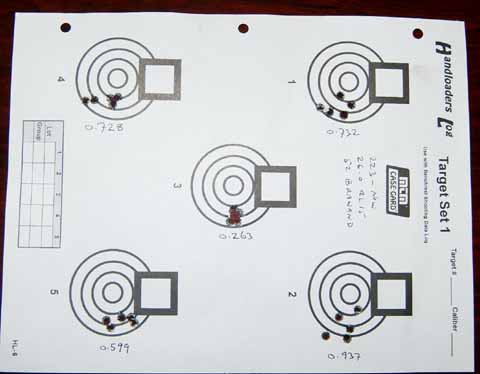
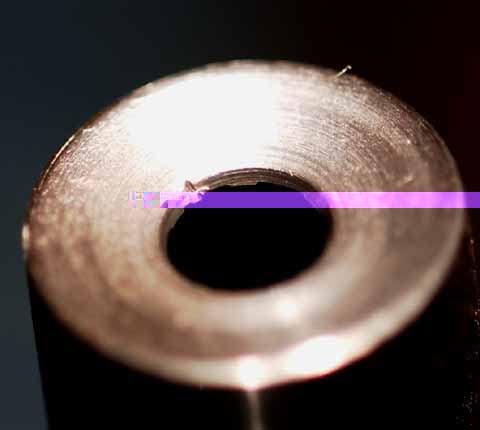
Photo 1 - we damaged the muzzle as shown with a drill bit, at 5 o'clock. 2 fouling shots were fired, then we shot our 5 groups of 5 shots each.
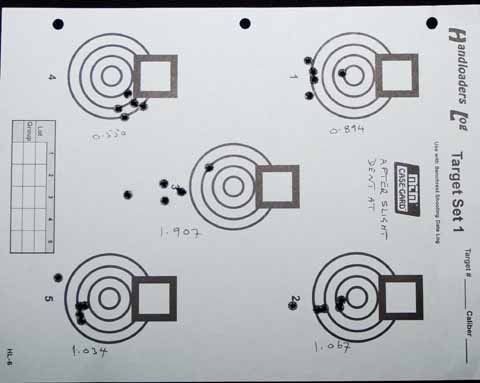
First group is the middle one, then top left going clockwise. Furthest bullet to the left in the first group is first shot!
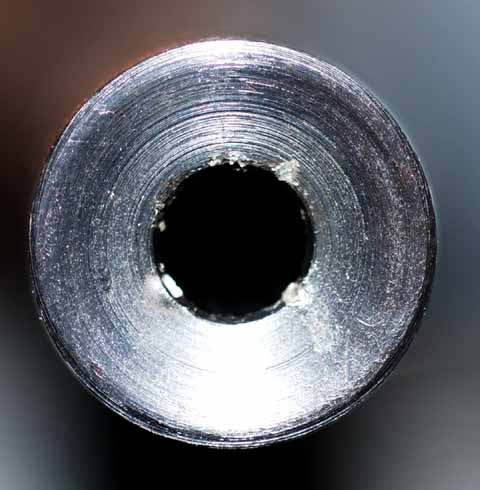
A few more dents added to the muzzle. Original dent is at 12, next to it s superficial dent caused by a rock we tried to hammer in the muzzle, but did not actually cause any damage to the rifling as such. The two dents at bottom left and right are caused by a screw driver we hammered into the muzzle to cause some damage.
| 1 | 2 | 3 | 4 | 5 | Average | |
| Undamaged | 0.728 | 0.732 | 0.263 | 0.599 | 0.937 | 0.651 |
| See Photo 1 | 1.907 | 0.550 | 0.894 | 1.034 | 1.067 | 1090 |